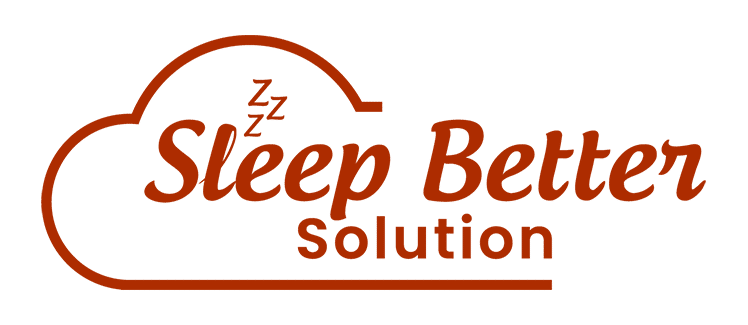
CPAP Machine Near Me Lodi NJ
Sleep apnea affects millions, yet many remain undiagnosed and untreated. If you’re experiencing symptoms like loud snoring, gasping during sleep, or constant fatigue, CPAP therapy could make a huge difference. For those in Lodi NJ, finding the right CPAP machine and support involves understanding your options, working with local experts, and navigating insurance.
This guide simplifies the process, covering everything from choosing the right machine to finding local providers and maintaining your equipment. Whether you’re newly diagnosed or upgrading your setup, the right tools and support can help you take control of your sleep apnea and improve your overall well-being. Quality sleep isn’t a luxury—it’s essential. Take the first step toward better health today.
Understanding Sleep Disorders That Benefit from CPAP Therapy
CPAP (Continuous Positive Airway Pressure) machines primarily treat obstructive sleep apnea, a condition where the airway repeatedly collapses during sleep, causing breathing interruptions. These interruptions, called apneas, can occur dozens or even hundreds of times per night, preventing restorative sleep and leading to serious health complications.
- Obstructive Sleep Apnea (OSA) represents the most common form of sleep-disordered breathing. During sleep, the muscles in your throat relax, allowing soft tissue to collapse and block the airway. This blockage triggers the brain to wake you briefly to restore breathing, though you may not remember these awakenings. The cycle repeats throughout the night, fragmenting your sleep and reducing oxygen levels in your blood.
- Central Sleep Apnea, though less common, can also benefit from specialized CPAP devices. This condition occurs when the brain fails to send proper signals to the muscles that control breathing. Unlike OSA, central sleep apnea doesn’t involve airway blockage but rather a neurological issue affecting breathing regulation.
- Mixed Sleep Apnea combines elements of both obstructive and central sleep apnea, requiring careful evaluation and often more advanced treatment approaches. Patients with mixed sleep apnea typically start with standard CPAP therapy and may progress to more sophisticated devices if needed.
CPAP Machine Types and Essential Features
Modern CPAP technology offers several device types, each designed to address specific needs and preferences. Understanding these options helps ensure you select equipment that will provide effective treatment while maximizing comfort and compliance.
- Standard CPAP Machines deliver continuous air pressure at a fixed level determined during your sleep study. These devices are reliable, cost-effective, and suitable for most patients with straightforward obstructive sleep apnea. The consistent pressure keeps your airway open throughout the night, preventing the collapse that causes breathing interruptions.
- Auto-Adjusting CPAP (APAP) Machines automatically modify pressure levels based on your real-time breathing patterns. These sophisticated devices monitor your breathing and increase pressure when they detect potential airway collapse, then reduce pressure when less is needed. APAP machines often improve comfort by using the lowest effective pressure throughout the night.
- BiPAP (Bilevel Positive Airway Pressure) Machines provide two different pressure levels: higher pressure during inhalation and lower pressure during exhalation. This dual-pressure approach can be more comfortable for patients who struggle with exhaling against continuous pressure or those requiring higher treatment pressures.
Essential features to consider when selecting a CPAP machine include data recording capabilities, which allow you and your healthcare provider to monitor treatment effectiveness and compliance. Look for devices with integrated humidifiers to reduce dryness and irritation, particularly important for patients living in dry climates or those prone to nasal congestion.
Ramp features gradually increase pressure over a set period, helping you fall asleep more comfortably before reaching therapeutic levels. Quiet operation is crucial for both you and your sleeping partner, with modern machines typically operating at sound levels comparable to a quiet whisper.
Step-by-Step Guide to Finding CPAP Equipment in Lodi, NJ
Securing CPAP therapy in Lodi requires a systematic approach that begins with proper medical evaluation and continues through equipment selection, fitting, and ongoing support. Following these steps ensures you receive appropriate treatment while maximizing insurance coverage and long-term success.

Step 1: Obtain a Sleep Study and Prescription
Your journey begins with a comprehensive sleep evaluation from a qualified sleep medicine physician. Most insurance plans require documentation of sleep apnea through either an in-lab polysomnography or home sleep test before covering CPAP equipment. The sleep study determines the severity of your condition and the appropriate pressure settings for your CPAP machine.
Step 2: Research Local Providers and Sleep Centers
Lodi offers several options for sleep medicine services and CPAP equipment suppliers. Start by identifying providers who accept your insurance and have experience treating sleep apnea. Look for facilities that offer comprehensive services, including initial consultations, sleep testing, equipment fitting, and ongoing support.
Step 3: Schedule Equipment Consultation and Fitting
Once you have your prescription, schedule appointments with potential suppliers to discuss equipment options. A proper fitting session should include mask selection and sizing, machine programming, and thorough education about operation and maintenance. Quality providers will offer multiple mask styles and sizes to ensure optimal fit and comfort.
Step 4: Arrange Insurance Authorization and Payment
Work with your chosen supplier to verify insurance coverage and obtain any necessary prior authorizations. Most insurance plans cover CPAP equipment with appropriate documentation, though you may be responsible for deductibles or copayments. Discuss payment options and rental versus purchase arrangements during this process.
Step 5: Begin Treatment with Ongoing Support
Start your CPAP therapy with realistic expectations and a commitment to consistency. Plan follow-up appointments to review compliance data, address any comfort issues, and make necessary adjustments. Many patients require several weeks to fully adapt to CPAP therapy, making ongoing support crucial for success.
Consulting Sleep Better Solution for Expert Care
At Sleep Better Solution, we are dedicated to providing expert guidance and support throughout your CPAP therapy journey. Our team of experienced professionals understands the challenges that come with introducing and maintaining sleep apnea treatment. We work closely with you to ensure your therapy is customized to meet your specific needs. From equipment selection and fitting to ongoing monitoring and adjustments, our goal is to help you achieve restful, restorative sleep. Trust Sleep Better Solution to deliver the care and expertise you deserve.
Navigating Insurance Coverage and Managing Costs
Understanding insurance coverage for CPAP equipment helps you make informed financial decisions while ensuring access to necessary treatment. Most health insurance plans, including Medicare, provide coverage for CPAP machines and supplies when medical necessity is properly documented.
Insurance Requirements and Documentation
Insurance companies typically require a formal sleep apnea diagnosis from a sleep study conducted by a qualified sleep medicine physician. The study must demonstrate an Apnea-Hypopnea Index (AHI) of 5 or higher, along with associated symptoms or comorbid conditions. Some plans may also require failed conservative treatment attempts before approving CPAP therapy.
Coverage Periods and Compliance Requirements
Most insurance plans operate on a rental-to-purchase model for CPAP machines, typically covering equipment costs over 10-13 months of demonstrated compliance. Compliance is generally defined as using the machine for at least 4 hours per night for 70% of nights during a 30-day period. Failure to meet compliance requirements may result in equipment reclaim by the insurance company.
Managing Out-of-Pocket Costs
Even with insurance coverage, patients may face significant out-of-pocket expenses including deductibles, copayments, and costs for supplies not fully covered by insurance. CPAP masks, tubing, and filters require regular replacement, with masks typically needing replacement every 3-6 months and other supplies more frequently.
Alternative Payment Options
For patients facing financial hardship or inadequate insurance coverage, several options may help reduce costs. Some suppliers offer payment plans or financing options for equipment purchases. Patient assistance programs from manufacturers may provide discounts or free equipment for qualifying individuals. Additionally, some sleep centers offer package deals that bundle equipment and services at reduced rates.
Essential Lifestyle Adjustments for CPAP Success
Adapting to CPAP therapy can require some lifestyle changes to ensure long-term success and improved sleep quality. Staying consistent with nightly CPAP use is vital, even during travel or periods of adjustment, as skipping sessions can hinder effective treatment. Maintaining a regular sleep schedule by going to bed and waking up at consistent times can further support the therapy’s benefits.
Additionally, focusing on weight management through a balanced diet and regular exercise can complement CPAP use, as excess weight is often associated with sleep apnea severity. Avoiding alcohol and sedatives close to bedtime can also help, as these substances can relax throat muscles and interfere with airflow. Building a supportive bedtime routine and addressing any discomfort directly with your healthcare provider will make the transition smoother and contribute to long-term success with CPAP therapy.
Maximizing Long-Term Treatment Success
Achieving long-term success with CPAP therapy requires ongoing commitment, regular monitoring, and proactive communication with your healthcare team. Understanding what to expect and how to address challenges as they arise helps ensure continued treatment effectiveness.

Tracking Progress and Compliance
Modern CPAP machines record detailed data about your nightly usage, including hours of use, mask leak rates, and apnea events per hour. Review this data regularly with your healthcare provider to identify trends and potential issues before they become problematic.
Many machines now offer smartphone apps or cloud-based platforms that make data tracking more convenient and engaging. Use these tools to monitor your progress and celebrate improvements in sleep quality and daytime alertness.
Recognizing When Adjustments Are Needed
Several signs may indicate your CPAP therapy needs adjustment. Returning symptoms such as loud snoring, gasping during sleep, or excessive daytime fatigue suggest your current settings may be inadequate. Significant weight changes, new medications, or changes in health status can all affect CPAP requirements.
Don’t hesitate to contact your healthcare provider if you experience persistent mask leaks, skin irritation, or difficulty tolerating your current pressure settings. These issues often have straightforward solutions when addressed promptly.
Building Support Networks
Connect with other CPAP users through online forums, support groups, or social media communities. Sharing experiences and tips with others facing similar challenges provides valuable emotional support and practical advice for overcoming common obstacles.
Many sleep centers offer periodic group education sessions or follow-up programs that provide ongoing support and education. Take advantage of these resources to stay informed about new developments in sleep apnea treatment and maintain motivation for consistent therapy use.
Taking Control of Your Sleep Health in Lodi, NJ
Investing in the right CPAP machine and support system in Lodi is essential for managing sleep apnea and improving your overall health. With proper treatment, many patients see significant boosts in energy, focus, and well-being.
Success with CPAP therapy starts with choosing knowledgeable healthcare providers who offer the right equipment and ongoing support. Take time to explore your options, ask questions, and find a provider dedicated to your long-term success.
Adapting to CPAP therapy takes patience, as it often requires a few weeks and occasional adjustments. Stay in touch with your healthcare team, address concerns early, and keep realistic expectations as you adjust.
Prioritizing your sleep health today sets the stage for a healthier, more energetic future. Whether you choose Sleep Better Solution or another provider in Lodi, taking the first step toward treatment is key to better sleep and quality of life.
